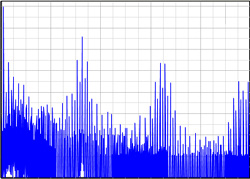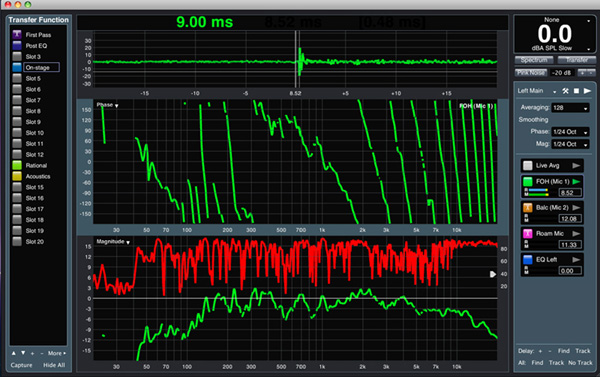
By using the coherence function it’s possible to tell whether the signals that feed port 1 and port 2 are coherent; that is, correlated sufficiently to provide meaningful results.
If the energy from the program material is broad-band, such as a symphony orchestra playing full-tilt, coherence will be high across the spectrum, and the operator will be able to safely adjust and trim EQ to compensate for the altered acoustical characteristics of the room, now occupied with patrons.
Conversely, if the program material is narrow-band, such as a solo acoustic guitar, coherence will be high, but only in the portion of the spectrum that relates to the guitar’s bandwidth. The remainder of the spectrum will show zero coherence. This tells the operator not to make any EQ touch-ups that fall outside of the guitar’s energy spectrum.
Evolution In Measurement
In this time of smart phones, cool tablets, and inexpensive laptops, the once-indelible footprint of dedicated spectrum analyzers that weigh 50 to 60 pounds has faded considerably.
But while dedicated machines are still functionally as valid as ever, and in many cases provide the most accurate results from the widest array of features, today’s market seeks smaller, lighter, and less expensive solutions. Products such as Rational Acoustics Smaart and SATLive, both of which are FFT-based and run on laptops, have largely replaced the legacy gear that started it all, such as the HP 3582A.
These days, even the venerable third-octave RTA is usually built on a digital platform, rather than a parallel bank of costly analog filters. Numerous RTA Apps now run on smart phones, breathing new life into a formerly fading methodology. But convenient as it is to have an RTA in your pocket, third-octave is still third-octave, even if the data is acquired digitally.
By choosing a machine that provides resolution of 1 Hz or better, when critical low-frequency measurements must be accurately acquired, you can be confident that the corrections you make are based on accuracy, not approximation.
Next time we’ll look at other measurement technologies, making distortion measurements are made, what to look for in a measurement grade microphone, and more.
Ken DeLoria is senior technical editor for ProSoundWeb and Live Sound International and has had a diverse career in pro audio over more than 30 years, including being the founder and owner of Apogee Sound.

